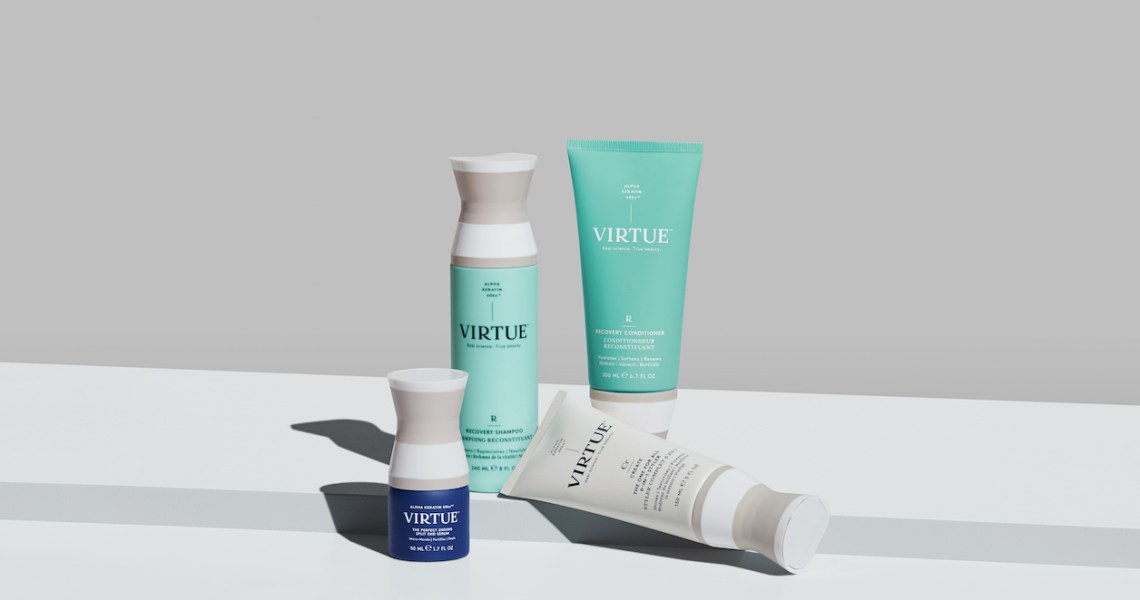Beauty brands have always marketed products promising to remedy every cosmetic problem imaginable, but in shoppers’ quest for the most novel innovations, a new category of brands are pulling in science.
Augustinus Bader and Virtue hair care have gained industry credence through their relationships with regenerative skin cell science research. Both brands base the synthesis of their ingredients and delivery on research done with burn victims. Meanwhile, Sir Fraser Stoddart, who won a Nobel Prize in chemistry in 2016, founded the brand Noble Panacea. It launched in Oct. 2019 and has since expanded to Net-a-Porter. It will launch at Harrods in April. Noble Panacea’s products include a patented ingredient delivery technology called Organic Molecular Vessel that promises to keep active ingredients like retinol as potent as possible. Noble Panacea is not the only brand leveraging the Nobel Prize, either. The U.K.-based company Argentum states on its website that it uses Nobel Prize-winning technology to develop its patented DNA HP, which is a polymer used to promote cellular regeneration.
“If you’re a scientist within the beauty industry, you come into [product formulation] with a protocol. You’re used to working from templates,” said Joy Isaacs, Argentum founder and CEO. “But someone from outside of the industry can come into a situation with a novel idea that no one else had thought about.”
This new trend of ultra-sophisticated science-backed brands shares similarities with the German and G-beauty trends, which also lean on research lab expertise. Customers tend to be high-net-worth individuals, as brands like Noble Panacea sell products that range between $149 and $420. Virtue shampoo or conditioner will set you back approximately $40. Both are also set apart from traditional dermatology brands by focusing more on ingredient delivery, rather than ingredients themselves. However, Noble Panacea still relies on tried-and-tested ingredients like retinol and peptides in its anti-aging products; Argentum focuses on colloidal silver, a historically anti-bacterial ingredient. In the beauty industry’s relentless pursuit of the next-and-best products that promise to best their competition, customers are turning to these luxury brands.
“We have a clear understanding of the expectations from our target consumer. Our consumers want to know what they’re buying into, that we care for the environment, and that we contribute to the world in positive ways and are a physically appealing brand,” said Celine Talabaza, Noble Panacea CEO.
All brands above prominently feature the brand and founder story in their communications. Virtue Labs tapped Jennifer Garner as a spokesperson in December 2019, and she has since posted video explainers of the brand and its science on her own Instagram account, where she has 8.6 million followers. Virtue itself also posts approximately three times a week videos and photo captions on Instagram that dive deeper into the science of its patented Alpha Keratin 60ku ingredient. It helps lend credibility to the claims it is making, said Melisse Shaban, Virtue CEO. But she added that, as it is a hair-care brand, it is still important to have hair-care professionals validating Virtue’s performance.
Virtue is sold in over 700 salons and retailers like Sephora, Neiman Marcus and SpaceNK, and is expecting $26 million in 2020 sales, said Shaban. Approximately 40% of purchases are repeat customers, proving that the company is providing a sticky product and education experience.
Ad position: web_incontent_pos1
Isaacs said that customers typically gravitate to either science claims or to natural-ingredient positioning and packaging, making it difficult to strike a balance for Argentum. DNA HP and its colloidal silver receive their own tab on the brand’s website, while its Instagram focuses more on the aesthetics of the brand. For Noble Panacea, the brand plans to announce an ambassador within the first half of 2020, in addition to launching offline and online advertising beginning in April. On Instagram, the brand runs a regular series under the hashtag #IngredientLove, which details ingredients like malachite and the specifics of how the OMV delivery system preserves the ingredient. Its website heavily features interviews with Sir Stoddart discussing his research in detail. But the brand is also conscious of making sure the information is digestible to laymen. At its launch event in October, both Sir Stoddart and New York-based dermatologist Anne Chapas, M.D. spoke to attendees and underscored both the science and direct skin-care benefits of the brand’s products.
“We are doing this bit by bit,” said Talabaza. “It’s not only about the technology because we are speaking to an aspirational customer, so we are trying to get them to understand the brand … in an aesthetically pleasing way. It’s more of a journey of discovery and needs time to be understood.”




